#j.l. hudson
Explore tagged Tumblr posts
Text
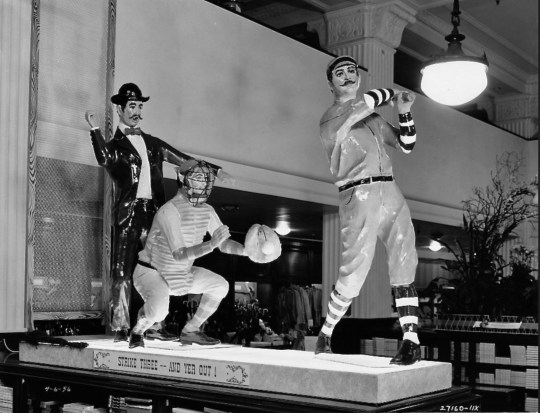
1920's J.L. Hudson Department Store baseball display, Detroit, Michigan. From Dave Etchie, FB.
31 notes
·
View notes
Text

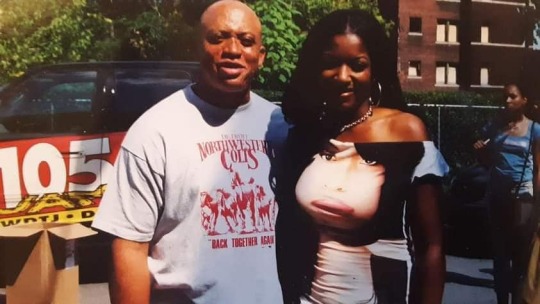



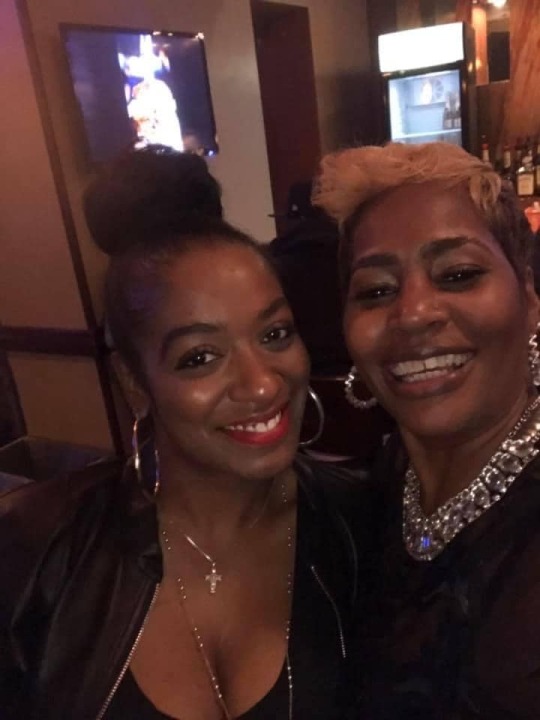


Happy Heavenly Birthday to Valerie Patrice Vaughn born September 26, 1977.
She passed away 1/16/23 due to cancer per Vaughn's family and friends. There is very little detail about Valerie's life. She was remembered as a sweet, kind, fun loving, and honest woman with deep humility.
Valerie was Aaliyah's best friend (since 1st grade) and normally kept her personally life private.
When CosmoGIRL! October/November 1999 Issue interviewed Aaliyah, they asked who does she hang with, Aaliyah responded:
A: I have two friends I’d say are my best friends - [Tommy Jeans model] Kidada Jones and Valerie Vaughn, who I’ve been friends with since first grade. I’m a homebody, so I’ll go to K's house and just hang out and watch movies and bake cookies. I’m also close with my choreographer Fatima, Missy [Elliott], Lil’ Kim and Da Brat - we all call each other and hang out at Missy’s house or go to a club and kick it. {credit: cametogivelove)
Her Funeral Service was held: Monday, January 30, 2023 12:00pm Family Hour, 1pm Service Triumph Church - North Campus 15600 J.L. Hudson Drive Southfield, MI 48075
Last three images credited to DaynaDane Remus Phillips via Facebook.
#Valerie Vaughn#Valerie P Vaughn#Valerie Patrice Vaughn#RIPValerie#RIP Valerie Vaughn#aaliyah#aaliyah haughton#ripaaliyah#detroit#best friends
15 notes
·
View notes
Text
OBERLIN NEURO-PSYCHOTHERAPY AND PROFESSIONAL PI
everything i need to say about the TV show Glee is that, i have observed so many TV tropes and foresaw whatever toxicity i have had in my main event that i never ignore in my time knowing i do this as a passion hobby to maintain and create that i never see is that, i never make any mistakes. i always tell the truth, i am upfront and honest and i am an introvert on the outside in, the more happier i get, the more i feel like i am one with myself online knowing my intuitive cloud i get is not all fuzzy with heartbreaks with casts i hear elsewhere if competing for good sportsman-ship means that i have not yet to interfere with the social onslaught of citizenship elsewhere with fame and now, the evil eye which i always say to keep a distance with whats not useful to you, so here is my take on the character/s that caused me ache upon infamy of my own work to say the least, so here i go
Linna
Glee: complete series.
based on Eynsenk's original theory. (rotational dialogue)
i know how prone the characters are to humiliation (heartbreaker series: one of 8 series that follows true story dialogues that make or break humanity as they are today (social-tropes)
(safe from verbal assault as seen on tv): Puck, Lauren, Becky, Sue, Blaine
CHOLERIC:
Brittany is most likely to cause heartbreak by making Santana do all of her dirty work (Santana knows the true story value to Rachel's life for her work in doing so, that makes Harper (new character) the new world order (social-trope)
Mercedes is also going to get along with everybody if she did not compare herself to Beyonce that much
(Horn, J.L.,)
Fluid Intelligence: Rachel is likely going to make sacrifices more than most (actually the bad guy), so this makes sense into why Jesse makes a difference knowing the plot in general making Harper the most influential person on the show knowing now what Gossip Girl can do (nothing makes a difference to now, Linna (actress become) do it all for you (nothing makes a difference in Harper knowing Sue's command than knowing who Sue is to her father in real life (not even famous til now)
test 1: accord: (failing the most) - Kurt Hummel's for not even looking too much into Rachel's life to make sure if anything about her personal history is made clear to his life making Harper's life feel good about (he is not even David Bowie relative in time and space that made him even afford workforce that made him even feel good about)
test 2: how far did Keanu go?- Mercedes Jones (Amber Riley) was not supposed to go that far into killing herself for diet (innocent one of the group) til making her feel guilty is knowing who Harper's father is (may he rest in peace)
test 3: (ignorance issues): the cast knows a.. (will do anything to sabotage their fame for 'free time' (harmful to pregnant women right now as i'm typing this)
Crystallised intelligence: Schue knows why he did not do it but actual reality, groomed Rachel (shams al'ma'araf) knowing why the plot did not work out in the ending (he forced pregnancy into making Harper (knew) slave her life for him (evil minister of Hollywood turned clown (now knowing it from a therapist's perspective)
test 1: money issues- they're loaded (not my problem)
test 2: heartbreak management- Rachel Berry and Finn Hudson sabotaged the group with Will Schuester (for pornographic enrolment of voice (legacy breaking the group apart for further development (Euphoria: TV series)
test 3: emotional harvesting- anything can happen (live-action cast in touch with the ending in real life (Miley's last call)
--PI --
he does not need to watch gossip girl
Memory and learning: the cast is live action no matter what (book of mormon epidemic on Hollywood ended now
test 1: mormonism is present in desi households (thank you, for making my life hell - sincerely, desi women in their 20's)
test 2: forgiveness- now, they are Islamic fault of human morales now (heavily failing boundaries stepping into sexual assaults in real life (now knowing this, they cannot keep up secondary to nothing, so one or two at max has to die, if anything to keep humanity going apart from their 'antics' now (kids shit die now)
test 3: female harm- so much. now, please watch it
Visual perception: it's not even relative to time and space til 2029 (now ended)
test 1: Will Schuester under Duvochny's watchclock- offended so many people with a thought that sincerely, even Sue has to emotionally fight that battle to keep a baby Harper alive (knowing her family's pride) is going to kill his career to keep up (all your fault, Schuester)
test 2: unbroken m/v in real life- nothing declared the cast to do it by therapy ghost-call (not even going to work by emotional response to now, a woman getting married (coming-of-age fairytale)
test 3: whatever goes, goes.- all their fault for human resources can deal with (locked on their own by tumblr PI service)
Auditory perception: if anything about the TV show, the runs ended on repeats if X-Files watches it for profit, so they're the ones to tell the tale now that the ending is not even plot official to the point (TV show Prisonbreak has a point to relative in time and space knowing autism can break efforts in subjugating the new Queen of TV plotlines without introductions without usage of battery (sleep) to charge formations in daily warfares in psychological assets (TV show Mr. Robot ends that permanently), so there is no such thing as using the world for money when there is no money to be used (so all of them are underneath lab rat experiment (book of lovato)
test 1: movies- nothing alters them by thought (they're shit on their own like that, nothing to do with heartbreak by initial response to the one sole viewer doing everything they can to 'keep up with whatever is relevant to them'
test 2: habitual fronts (tv-show relations is seriously forbidden according to Schue is why another actor replaced him)
test 3: n/a
Retrieval ability: when watching it from beginning to end, there is no such thing as making ends meet when there are plot holes everywhere in terms of social healthcare and welfare in unity (like, there is no point singing when there is no bridge to be built around social harmony based on one character alone, like if you don't like her, then kick her out (or so that you will feel (the cast) extremely cringe over the merch that physical death is able to happen on 2025 that is going to resolve that upon notice on Hollywood that takes place on heartbreak that is not even evident but is catered around offense around exposing hinduism (large effect on south-asian colony and around north-east europe knowing who the Glee cast are)
Cognitive speediness: ways of remembering it is that, there is a way to pick up momentum of social clause if seen upon notice, if the neuro-divergent population were not to be able to find that for you (massive PI on the cast now, knowing is that physical death is now made sure, if you look up to Keanu Reeves)
Processing speed: the cast knows who made that wrong. okay, like if i care if sleep with them to make that end meet is a massive offense on British isles now knowing what and why Jesse cannot even cope alone, he is part of a different show choir of his own accord knowing he can sabotage New Directions any day (Harper being on IX)
0 notes
Video
youtube
Why America’s Retailers Like Target Fail Abroad
" Retail Reinvention: Marketing Strategies of Target Corporation Target’s first and only foray into international markets happened in 2013 in Canada. The retailer opened a total of 133 stores in just over a year. But the expansion didn’t go as planned. By April 2015, Target withdrew from the North American neighbor and closed all locations. Poor real estate decisions, weak leadership, and major SAP systems errors contributed to the company failing in Canada. Target lost $4.1 billion in after-tax losses in just one year as a result of the fallout. The company has no plans to expand internationally anytime soon. McDonald’s is synonymous with fast-food in many parts of the world, but there is one country where it’s failed to capture national attention. Iceland celebrated the fast-food chain when it entered in 1993, but a global economic collapse during the next 15 years forced McDonald’s to exit the Nordic region. And Harley-Davidson may be the biggest name in American motorcycles, but the U.S. market is aging and shrinking. India and southeast Asia, with massive and growing markets, offered Harley-Davidson hope. But the legendary maker of big iron ‘hogs’ faces fierce competition in India. In order to succeed, Harley will need to make smaller and cheaper bikes that its most loyal fans might not recognize. Chapters: 00:00 – Introduction 00:33 — Why Target Failed In Canada (Published September 2022) 12:47 — Why McDonald’s Failed in Iceland (Published February 2019) 20:24 — Why Harley Davidson is struggling in India (Published May 2019) " Video Source: CNBC - - Well, complement the information and case study presented in the video with Two articles, written by The Brand Hopper: 1º Article: " Target is an American retail corporation that operates a chain of discount department stores and hypermarkets, headquartered in Minneapolis, Minnesota. It is the sixth-largest retailer in the world in 2022 in terms of worldwide retail sales, and a component of the S&P 500 Index. The company is one of the largest American-owned private employers in the United States. Target was founded in Minneapolis by businessman George Dayton in 1902, as a department store called Goodfellow Dry Goods. The name was changed to Dayton Dry Goods Company in 1903, and to Dayton Company in 1911. In 1962, the company opened its first Target store, designed as a discount version of Dayton’s department stores. George Dayton founded Dayton's George Dayton founded Dayton’s Target quickly became a success, and the company began expanding its store count in the 1970s and 1980s. In 1969, Dayton Company merged with the J.L. Hudson Company to become the Dayton-Hudson Corporation. The company continued to expand its retail operations under the Target brand, and also acquired several other department store chains, including Marshall Field’s, Mervyn’s, and Dayton’s. In 2000, the Dayton-Hudson Corporation changed its name to Target Corporation. The company continued to grow in the 2000s, and opened its first stores outside of the United States in Canada in 2004. Target also expanded its online presence in the 2000s, and launched its own e-commerce website in 2004. Target is renowned for its unique approach to retail, focusing on the idea of providing affordable yet stylish products to a broad range of customers. The company’s philosophy revolves around the concept of “Expect More. Pay Less.” This philosophy underscores their commitment to offering quality merchandise at competitive prices, thereby making fashionable and functional items accessible to a wider audience. Today, Target operates over 1,900 stores in the United States and Canada. The company also owns and operates several other businesses, including the Shipt grocery delivery service and the Roundel online marketplace. Target is a major player in the retail industry, and is known for its wide selection of products, its competitive prices, and its convenient shopping experience. One of Target’s key differentiators is its store experience. The company strives to create a shopping environment that’s both enjoyable and convenient for its customers. Each store is designed with a clean and organized layout, often featuring well-lit aisles, a wide variety of products, and dedicated sections for different categories. This layout is intended to enhance the overall shopping experience and encourage customers to explore the store. Marketing Strategies of Target In today’s competitive business landscape, successful companies employ a wide range of marketing strategies to attract and retain customers. Target Corporation, one of the largest retail chains in the United States, has distinguished itself through a combination of innovative marketing approaches that have contributed to its sustained growth and brand recognition. Let’s delves into the various marketing strategies that have propelled Target’s success: Table of Contents Brand Positioning and Identity: Product Assortment and Merchandising: Omnichannel Experience: Emotional Advertising Campaigns: Influencer and Celebrity Partnerships: Seasonal and Event-Based Marketing: Brand Positioning and Identity: Brand positioning and identity play an essential role in determining how Target Corporation presents itself to its audience and sets itself apart from competitors. These elements help define what makes the brand unique and memorable, ultimately influencing consumer perceptions and purchase intentions. Target Corporation positions itself as a one-stop shopping destination for everyday essentials and stylish finds at affordable prices. Its brand identity emphasizes convenience, style, and affordability, making it stand out in the retail industry. Through its well-designed stores, trendy fashion lines, and accessible price points, Target creates a welcoming environment where customers feel confident about finding everything they need under one roof. The brand’s strong visual identity includes a signature red bullseye logo and bold use of color throughout its stores and marketing materials. This consistent look and feel across channels helps establish recognition and recall among consumers. In addition, Target leverages partnerships with popular brands and celebrities to further strengthen its image and draw in new audiences. Target Logo Effective brand positioning and identity contribute significantly to Target Corporation’s success by fostering customer loyalty and driving sales growth. By consistently delivering on its promise of high-quality, affordable products and services, Target continues to solidify its place in the hearts of American households. Product Assortment and Merchandising: Product assortment and merchandising are crucial aspects of Target Corporation’s operations, playing a significant role in enhancing the company’s competitive edge and maximizing profitability. A diverse range of quality products offered at various price points ensures there is something for everyone, while visually appealing displays encourage impulse purchases and drive sales. Target Corporation offers a wide variety of products ranging from apparel and home decor to electronics and groceries. Their product mix caters to different lifestyles and budgets, allowing customers to find exactly what they need without having to shop elsewhere. The company continuously updates its inventory to keep up with changing consumer tastes and seasons, ensuring a fresh selection for repeat visitors. Merchandising plays a vital role in enticing customers to make purchases. Target Corporation designs eye-catching displays that highlight key products and create a sense of urgency through limited-time offers and clearance sections. Seasonal and holiday-themed displays also capture shoppers’ attention and stimulate sales. Overall, Target Corporation’s product assortment and merchandising strategies work together to provide an enjoyable shopping experience that keeps customers coming back. By offering a broad range of quality products at different price points and presenting them in visually appealing ways, the company encourages impulse purchases and drives sales growth. Omnichannel Experience: An omnichannel experience refers to a seamless shopping journey across multiple touchpoints, including physical stores, online platforms, mobile devices, and social media. Target Corporation has invested heavily in creating an integrated omnichannel experience for its customers, aimed at improving convenience, efficiency, and engagement. Here are some examples: Online Shopping: Customers can browse and purchase products directly from Target’s website or mobile application. The platform features user-friendly navigation, detailed product descriptions, and real-time availability information. Customers can also access personalized recommendations based on their past purchases and search history. Target Website Mobile Applications: Target offers dedicated apps for iOS and Android devices, allowing users to browse and purchase products, view weekly ads, and manage their Cartwheel savings. The app also provides store maps and directions, helping customers navigate physical locations more easily. Physical Stores: Target maintains an extensive network of brick-and-mortar locations across the United States, each designed to optimize the shopping experience. Store layouts feature clearly marked departments, easy-to-find products, and helpful signage. Employees are trained to assist customers with locating items, answering questions, and processing transactions. Target Store Order Pickup & Drive Up Services: Target offers order pickup services for customers who prefer to collect their orders in person rather than receive home delivery. The service allows customers to order online and schedule a time to pick up their packages curbside or at the front door of participating locations. Recently, Target introduced a Drive Up service that lets customers order online and have their items delivered right to their cars within minutes of placing their order. These services enhance convenience and flexibility for busy individuals or those who prefer not to carry heavy loads around the store during their visit. Target Corporation’s omnichannel approach focuses on providing a cohesive and convenient shopping experience across all touchpoints. From online shopping and mobile applications to physical stores and social media presence, customers can access Target products and services whenever and however they choose. With these initiatives, Target strives to meet evolving customer expectations and stay ahead of the competition in today’s fast-paced retail landscape. Emotional Advertising Campaigns: Target Corporation leverages emotional advertising campaigns as part of its overall marketing strategy to connect with consumers on a deeper level and build long-term relationships. This type of advertising creates strong feelings and associations between brands and people, often resulting in increased brand awareness, preference, and loyalty. Here are some notable examples of Target’s emotionally charged advertisements: “The Toycracker That Boy” Holiday Commercials (2018): In this heartwarming series of commercials, a young boy named Tyler discovers his love for music after receiving a toy keyboard as a gift from Santa. As he grows older, he becomes a successful artist, crediting the toy as the source of his creativity. The story culminates in a surprise reunion between Tyler and his childhood self, showcasing how memories made with loved ones can last a lifetime. “Toys For Tots” Charitable Program Promotion (2017): Target partnered with the Marine Corps Reserve Toys for Tots Foundation to help bring joy to children in need during the holidays. The campaign featured heartfelt stories of families struggling financially yet still finding ways to give back to others. The emotional appeal motivated customers to support the cause by purchasing and donating toys to less fortunate kids. Toys for Tots Website These campaigns demonstrate how Target uses emotional advertising to evoke powerful responses from customers. By focusing on relatable experiences and shared values, such as family bonding, generosity, and nostalgia, Target creates memorable moments that resonate beyond just making a sale. Over time, these connections strengthen the relationship between Target and its audience, fostering brand loyalty and encouraging repeat business through meaningful interactions. Influencer and Celebrity Partnerships: Target Corporation leverages influencer and celebrity partnerships to enhance brand visibility, connect with consumers, and drive sales. These collaborations involve product endorsements, limited edition collections, exclusive content creation, event sponsorships, and experiential marketing activations. Notable examples include: Lilly Pulitzer x Target Collection: In 2015, Target teamed up with iconic resort wear designer Lilly Pulitzer to create an affordable, limited edition collection featuring her signature patterns and colors. The collaboration generated widespread media attention and drove massive sales, leading to multiple subsequent releases over the years. Lilly Pulitzer x Target TOMS x Target Collaboration: In 2017, Target joined forces with footwear and apparel brand TOMS to offer a range of shoes, accessories, and clothing items, including products designed to benefit global philanthropic initiatives. The partnership highlighted Target’s commitment to socially responsible fashion and consumer demand for ethical consumption options. TOMS x Target Collaboration Fashion Designer Collections: Target frequently collaborates with renowned designers like Peter Pilotto, Victoria Beckham, and Zac Posen to launch limited edition apparel lines inspired by their high-end runway designs. These capsule collections attract fashion enthusiasts seeking accessible luxury pieces without breaking the bank. Food Blogger and Chef Partnerships: Target has worked with popular food bloggers and chefs like Chrissy Teigen, Padma Lakshmi, and Molly Yeh to develop delicious recipes incorporating store-brand ingredients or kitchenware. Recipe booklets and cooking events further engage customers interested in home cooking and entertaining. Beauty Influencer Collaborations: Target has teamed up with beauty industry leaders like Huda Kattan and Patrick Starrr to introduce exclusive makeup and skincare lines tailored to diverse skin tones and preferences. These influencer collaborations capitalize on the growing interest in online beauty tutorials and social media makeup trends. Athletic Collaborations: The sneaker collabs are another way that Target leverages influencer and celebrity partnerships to boost brand appeal and sales. By partnering with athletes like Serena Williams, Misty Copeland, and Simone Biles, Target creates stylish yet functional activewear lines reflective of each athlete’s personal style and achievements. These collaborations not only resonate with fitness enthusiasts but also showcase Target’s dedication to empowering women and girls through sports participation. Target’s influencer and celebrity partnerships often extend beyond traditional retail categories into music, film, television, and literature. For instance, Target has supported projects like “The Handmaid’s Tale” series adaptation, partnered with musicians like Lady Gaga and Taylor Swift for album release promotions, and hosted special events with authors like Rainbow Rowell and Jenny Lawson. Such ventures help position Target as a cultural hub where customers can discover new interests and passions through shared experiences with their favorite artists and creators. Overall, Target’s influencer and celebrity partnerships demonstrate the company’s ability to adapt to evolving customer desires while maintaining its core values of quality, affordability, and community involvement. By aligning itself with inspiring individuals across industries, Target fosters a sense of connection between its brand and consumers, encouraging long-term loyalty and support. Seasonal and Event-Based Marketing: Target Corporation utilizes seasonal and event-based marketing strategies to maximize sales opportunities throughout the year. Here are some notable examples: Back-to-School Campaigns: Each summer, Target runs extensive back-to-school campaigns targeting parents looking for affordable essentials such as uniforms, stationery, and lunchboxes. Promotional offers, thematic displays, and digital content (e.g., checklist videos) encourage families to shop at Target for all their back-to-school needs. Target’s Poster for Back to School Sale Holiday Promotions: During major holidays like Thanksgiving, Christmas, Hanukkah, and New Year’s, Target rolls out festive decorations, gift ideas, and party supplies. Its holiday marketing efforts focus on creating memorable family moments and making it easy for customers to find everything they need under one roof. Limited Edition Product Launches: Target regularly introduces exclusive, limited edition merchandise tied to popular culture events like movie premieres, comic conventions, and video game releases. These unique items generate buzz among collectors and fans eager to own rare commemorative items related to their beloved franchises. Spring Home Refresh Campaigns: As winter ends, Target emphasizes spring cleaning and home refresh concepts, offering deals on storage solutions, bedding, and indoor/outdoor décor. This approach helps customers prepare for warmer weather and motivates them to update their living spaces before hosting gatherings or embarking on DIY projects. Summer Clearance Sales: To clear out inventory during transitional seasons like late spring and early fall, Target runs aggressive clearance events for swimwear, patio furniture, and other warm-weather items. These sales entice bargain hunters who want to stock up on discounted necessities ahead of future sunny days. Summer Clearance Sales at Target Valentine’s Day and Galentine’s Day Promotions: Target embraces romantic occasions like Valentine’s Day and Galentine’s Day (a fictional holiday popularized by Parks and Recreation TV show), offering heartwarming gifts, candy, and decorations for both couples and friends to express love and appreciation for loved ones. Target’s Valentine’s Day and Galentine’s Day promotions aim to create joyful shopping experiences around these sentimental occasions, helping customers connect with others and spread affection through thoughtful gifting. Target’s Valentine’s Day Display Target’s seasonal and event-based marketing strategies center on providing shoppers with relevant products and experiences aligned with their lives and annual milestones. By anticipating consumer needs and wants during key times of the year, Target remains an attractive destination for people seeking convenience, value, and fun when planning for holidays, school schedules, and other meaningful occasions. In conclusion, Target Corporation’s success is attributed to a combination of effective market segmentation, consistent branding, personalized experiences, emotional advertising, community engagement, and innovative approaches to stay ahead in the retail industry. By understanding its customers and adapting to changing market dynamics, Target continues to thrive as a beloved and influential retail brand. " 2º Article: "Hitting The Bullseye : Target Corp Trailblazing Journey In Retail Target Corporation is an American retail corporation headquartered in Minneapolis, Minnesota. It is the seventh largest retailer in the United States, and a component of the S&P 500 Index. Target was established as the discount division of Dayton’s department store of Minneapolis in 1962. It began expanding the store nationwide in the 1980s (as part of the Dayton-Hudson Corporation), and introduced new store formats under the Target brand in the 1990s. As of 2023, Target operates 1,948 stores throughout the United States, and is ranked No. 1 in the discount store category by Forbes. The company’s mission is to “inspire and empower guests to choose the right products and services to meet their needs every day.” Target’s target market is middle-class families. The company offers a wide variety of merchandise, including apparel, home goods, electronics, and groceries. Target also offers a number of services, such as a pharmacy, a credit card, and a home delivery program. Target is known for its innovative marketing campaigns and its focus on customer service. The company has been praised for its efforts to make shopping more convenient and enjoyable for its customers. In recent years, Target has faced some challenges, including competition from online retailers and a data breach that affected millions of customers. However, the company has responded to these challenges by investing in its stores and its online presence. Target is a major player in the retail industry and it is expected to continue to grow in the years to come. The company is well-positioned to succeed in the competitive retail landscape due to its strong brand, its focus on customer service, and its commitment to innovation. Table of Contents Founding History of Target Business Segments of Target Corporation Target’s Approach to Retail, target market, and Unique Selling Proposition Target Corporation financial performance Target Corporation Marketing Approach and Strategies Growth Strategy of Target Founding History of Target Target Corporation, one of the largest retail chains in the United States, has a rich founding history that dates back to the early 20th century. The company’s roots can be traced back to 1902 when it was established as Dayton Dry Goods Company by George Draper Dayton in Minneapolis, Minnesota. George D. Dayton initially acquired the struggling Goodfellow’s Dry Goods store and renamed it Dayton Dry Goods Company. Under his leadership, the store experienced steady growth and success. In 1911, Dayton��s son, Nelson Dayton, joined the business and played a significant role in its expansion. In 1946, the company made a significant strategic move by opening its first suburban location called “The Target.” This new store format focused on offering discounted goods in a department store setting. The concept of providing high-quality products at affordable prices was a success, prompting the company to consider expanding this model further. Target First Store Opening | The Brand Hopper Target First Store Opening In 1962, the Dayton Company launched its first official Target store in Roseville, Minnesota. The new store featured a clean, modern design, and its merchandise was priced lower than traditional department stores. Target aimed to attract a broad customer base by offering a wide range of products, including apparel, household essentials, and home goods. The introduction of the Target brand was a pivotal moment in the company’s history. The name “Target” was chosen to represent the store’s focus on providing customers with a specific, targeted shopping experience. The iconic red bullseye logo, still in use today, was also introduced at this time. The success of the first Target store led to rapid expansion throughout the 1960s and 1970s. Target stores began popping up in various locations across the United States, offering customers a unique and affordable shopping experience. By 1979, the company changed its name to the Dayton-Hudson Corporation to reflect the increasing significance of the Target brand. In subsequent years, Target continued its expansion and diversification efforts. The company acquired several regional retail chains, including Mervyn’s and Marshall Field’s, further solidifying its presence in the retail industry. These acquisitions allowed Target to reach new markets and expand its product offerings. In 2000, the Dayton-Hudson Corporation underwent a rebranding and changed its name to Target Corporation to align with the growing prominence and recognition of the Target brand. The name change reflected the company’s commitment to its flagship retail chain and its vision for continued growth and success. Today, Target Corporation operates over 1,900 stores across the United States and has established itself as a leading retail brand. With a focus on providing affordable, stylish products and exceptional customer experiences, Target continues to evolve and adapt to changing consumer demands in the ever-evolving retail landscape. Business Segments of Target Corporation Target Corporation operates through several distinct business segments, each catering to different consumer needs and contributing to the company’s overall success. These segments include: Retail Stores: Target’s primary business segment is its network of retail stores. These stores offer a wide range of products, including apparel, home goods, electronics, beauty products, groceries, and more. Target stores are designed to provide a convenient and enjoyable shopping experience, with well-organized departments, attractive displays, and friendly customer service. The company operates stores in various formats, including Target stores, SuperTarget stores (which include a full grocery section), and small-format Target stores located in urban areas. Online Sales: Target has significantly expanded its online presence in recent years. Through its e-commerce platform, target.com, customers can shop for products online and have them delivered to their doorstep. Target’s online sales segment has seen substantial growth, offering a wide selection of merchandise and leveraging the convenience of online shopping to cater to the evolving needs of consumers. Target Brands and Exclusive Merchandise: Target has developed an extensive portfolio of private label brands and exclusive merchandise. These brands offer unique and high-quality products across various categories, including apparel, home goods, beauty, and food. Target’s private label brands, such as Goodfellow & Co., Cat & Jack, and Threshold, provide customers with exclusive and affordable options, helping differentiate Target’s offerings from its competitors. Target Optical and Target Clinic: In addition to retail operations, Target also operates Target Optical centers and Target Clinic locations. Target Optical provides customers with eyeglasses, contact lenses, and vision care services. Target Clinic offers basic medical services such as vaccinations, minor illness treatment, and preventive care. These services provide added convenience to shoppers and contribute to Target’s commitment to holistic customer care. Target Circle Loyalty Program: Target Circle is Target’s loyalty program, designed to reward customers for their loyalty and incentivize repeat purchases. Members of Target Circle can earn personalized offers, get early access to sales, enjoy discounts, and receive other exclusive benefits. This loyalty program helps drive customer engagement, fosters brand loyalty, and encourages repeat visits to Target stores or online shopping. Each of these business segments plays a crucial role in Target’s overall operations and contributes to the company’s financial performance. By diversifying its offerings and embracing omnichannel retail strategies, Target aims to meet the evolving needs of consumers and remain a leader in the retail industry. Target’s Approach to Retail, target market, and Unique Selling Proposition Target Corporation has developed a distinct approach to retail that sets it apart from competitors. With a focus on creating an enjoyable and convenient shopping experience, Target caters to a wide range of customers, offering a mix of affordability, style, and quality. Let’s delve into Target’s approach to retail, its target market, and its unique selling propositions in more detail: Approach to Retail Target differentiates itself through its well-designed stores, attractive displays, and emphasis on customer experience. The company strives to create an inviting and engaging atmosphere, with wide aisles, organized departments, and visually appealing layouts. Target’s stores are known for their clean and modern aesthetic, providing a pleasant shopping environment for customers. Target Market Target aims to cater to a broad customer base, including individuals and families seeking affordable yet stylish products. While its offerings span multiple categories, Target focuses on household essentials, apparel, home goods, and electronics. The company positions itself as a destination for everyday needs, attracting customers looking for quality products at competitive prices. Unique Selling Propositions: a. Affordable Style: Target is renowned for its “cheap-chic” strategy, combining affordable pricing with stylish merchandise. The company collaborates with renowned designers and brands to offer exclusive collections that reflect current fashion trends. This approach enables customers to find fashionable items at accessible price points. b. Diverse Product Range: Target provides a wide range of products, including clothing, accessories, furniture, home decor, electronics, groceries, and more. By offering a diverse assortment, Target aims to meet customers’ various needs and preferences, positioning itself as a one-stop shopping destination. c. Exclusive Brands and Partnerships: Target has developed a robust portfolio of private label brands, such as Cat & Jack for kids’ clothing, Threshold for home goods, and Archer Farms for food products. These exclusive brands offer customers unique and high-quality options not found elsewhere, fostering brand loyalty and differentiation. d. Inclusive Sizing and Diversity: Target has been proactive in promoting inclusivity by expanding its apparel sizing options and featuring diverse models in its marketing campaigns. This commitment to inclusivity resonates with customers seeking retailers that prioritize diversity and cater to a broader range of body types. e. Target Circle Loyalty Program: Target offers a loyalty program called Target Circle, providing customers with personalized offers, discounts, and early access to sales. This program enhances the overall shopping experience, incentivizing customers to return to Target for their shopping needs.f. f. Convenience and Digital Integration: Target has invested heavily in its digital capabilities and omnichannel strategy. It offers online shopping with various delivery options, including in-store pickup and same-day delivery. Additionally, Target has integrated its physical and digital channels, allowing customers to seamlessly switch between online and in-store experiences. Target’s approach to retail, focus on its target market, and unique selling propositions have enabled it to carve out a distinctive position in the retail industry. By combining affordability, style, and convenience, Target has cultivated a loyal customer base and positioned itself as a preferred destination for shoppers seeking a diverse range of quality products. Target Corporation financial performance Target’s financials have been strong in recent years. In fiscal year 2022, the company generated $109 billion in revenue and $4.2 billion in net income. This represents a 10% increase in revenue and a 20% increase in net income from the previous year. Target’s strong financial performance is due to a number of factors, including: A growing customer base: Target’s customer base has been growing in recent years, driven by the company’s expansion into new markets and its focus on providing a convenient and affordable shopping experience. A strong online presence: Target has a strong online presence, which has helped the company to reach new customers and to increase sales. A focus on innovation: Target is constantly innovating, which has helped the company to stay ahead of the competition. For example, Target was one of the first retailers to offer same-day delivery and buy online, pick up in store. Target’s strong financial performance is a positive sign for the company’s future. The company is well-positioned to continue to grow and to succeed in the years to come. Here is a more detailed look at Target’s financials over the past few years: Fiscal Year 2022: Revenue: $109 billion, Net Income: $4.2 billion Fiscal Year 2021: Revenue: $100 billion, Net Income: $3.5 billion Fiscal Year 2020: Revenue: $94 billion, Net Income: $2.9 billion Fiscal Year 2019: Revenue: $90 billion, Net Income: $2.7 billion As you can see, Target’s revenue and net income have been growing steadily in recent years. This growth is a testament to the company’s strong business model and its focus on providing a great shopping experience for its customers. Target Corporation Marketing Approach and Strategies The marketing approach for Target involves a combination of strategies aimed at building brand awareness, driving customer engagement, and increasing sales. Here are the key elements of the marketing approach for Target: Target Market Segmentation: Target Corporation identifies and segments its target market based on various factors such as demographics, psychographics, and behavioral patterns. This helps in understanding the needs, preferences, and shopping habits of different customer groups. Brand Positioning: Target positions itself as a trendy, affordable, and stylish retail destination that offers a wide range of products for all ages. The brand focuses on providing a differentiated shopping experience compared to its competitors. Product Assortment and Pricing: Target curates its product assortment to cater to the diverse preferences of its target market. The company offers a combination of owned brands and partnerships with renowned designers and brands to provide unique and exclusive products. Target maintains a balance between quality and affordability, offering competitive pricing strategies and regular discounts to attract price-conscious shoppers. Integrated Marketing Communications: Target utilizes various communication channels to reach its target audience effectively. This includes traditional advertising mediums such as television, radio, and print, as well as digital channels like social media, email marketing, and targeted online advertisements. The messaging across these channels is consistent and reinforces the brand’s key attributes. In-Store Experience: Target places a strong emphasis on creating an enjoyable and engaging in-store experience. This includes well-designed store layouts, visually appealing displays, and knowledgeable and friendly staff. Target stores often incorporate trendy and themed sections, such as the “dollar spot” or seasonal displays, to create a sense of discovery and excitement for shoppers. Digital Presence and E-commerce: Recognizing the importance of online shopping, Target has invested heavily in its e-commerce platform. The company offers a user-friendly website and mobile app, enabling customers to browse and purchase products online. Target also provides options for in-store pickup, same-day delivery, and subscription services to enhance convenience for customers. Customer Loyalty Programs: Target’s loyalty program, Target Circle, offers exclusive benefits, personalized discounts, and early access to sales for members. This program helps to foster customer loyalty and encourages repeat purchases. Target leverages data collected through the loyalty program to personalize marketing messages and offers to individual customers. Community Engagement: Target actively engages with local communities through philanthropic initiatives, sponsorships, and partnerships. The company supports various charitable causes and promotes a sense of social responsibility, which resonates with many customers and enhances brand affinity. Data-driven Marketing: Target leverages data and analytics to gain insights into customer behavior, preferences, and purchasing patterns. This data-driven approach allows Target to personalize marketing campaigns, recommend products, and optimize promotional strategies based on individual customer needs. Continuous Evaluation and Adaptation: Target regularly evaluates the effectiveness of its marketing strategies through performance metrics, customer feedback, and market research. This enables the company to identify areas for improvement and adapt its marketing approach to changing market dynamics and customer demands. By employing these key elements in their marketing approach, Target Corporation aims to build a strong brand image, drive customer engagement, and ultimately increase sales and market share. Also Read: From Corner Store to Healthcare Giant: The Story of Walgreens Growth Strategy of Target Target Corporation employs several growth strategies to expand its business and maintain its position as a leading retail company. Here are some key elements of Target’s growth strategy: Store Expansion and Remodeling: Target continues to open new stores in strategic locations to reach untapped markets and expand its customer base. The company conducts thorough market research to identify areas with high growth potential and tailors its store formats to meet the needs and preferences of local communities. Additionally, Target invests in remodeling existing stores to enhance the shopping experience and keep up with changing consumer trends. E-commerce and Digital Expansion: Target recognizes the growing importance of e-commerce and digital channels in retail. The company has heavily invested in its online platform, improving website functionality, user experience, and mobile app capabilities. Target also offers various digital services such as same-day delivery, in-store pickup, and subscription options. This multi-channel approach allows Target to reach a broader customer base and adapt to the evolving retail landscape. Private Label and Exclusive Brands: Target focuses on developing and expanding its private label and exclusive brands. These brands offer unique and differentiated products, allowing Target to maintain competitive pricing and margins. By expanding their portfolio of private label and exclusive brands across various categories, Target can provide customers with a wide selection of high-quality, affordable options that are not available in other stores. Partnerships and Collaborations: Target forms strategic partnerships and collaborations with popular brands, designers, and influencers to create exclusive collections and products. These partnerships help Target attract new customers, generate buzz, and position itself as a trendy and fashionable retailer. Notable collaborations include partnerships with designers like Missoni, Lilly Pulitzer, and Hunter, as well as collaborations with popular brands like Disney and Starbucks. Focus on Customer Experience: Target places a strong emphasis on providing an exceptional customer experience. This includes investing in well-designed stores, creating visually appealing displays, offering personalized services, and ensuring efficient and friendly customer service. Target also leverages data and technology to personalize marketing messages, promotions, and product recommendations, thereby enhancing the overall customer experience. International Expansion: While Target primarily operates in the United States, the company has explored international expansion opportunities in the past. However, Target has taken a more cautious approach, focusing on establishing a strong domestic presence before pursuing significant international expansion. As of my knowledge cutoff in September 2021, Target had not made significant progress in expanding into international markets. Data Analytics and Insights: Target utilizes data analytics and insights to understand customer behavior, preferences, and shopping patterns. By leveraging advanced analytics and machine learning algorithms, Target gains valuable insights that drive decision-making in various areas such as inventory management, pricing, and personalized marketing. This data-driven approach enables Target to optimize its operations and provide a more tailored and seamless shopping experience for customers. Sustainability Initiatives: Target is committed to sustainability and has implemented various initiatives to reduce its environmental impact. The company aims to be a leader in sustainable retail by investing in renewable energy, reducing greenhouse gas emissions, and offering eco-friendly product options. These sustainability efforts not only align with customer values but also contribute to Target’s long-term growth and reputation. Overall, Target’s growth strategy involves a combination of store expansion, digital expansion, product differentiation, customer-centric initiatives, and data-driven decision-making. By continuously adapting to changing consumer preferences and market dynamics, Target strives to drive growth, increase market share, and strengthen its position as a prominent retailer. " Source of Two Articles about Target: thebrandhopper. com About Mc Donalds, we can read in thebrandhopper. com: " McDonald’s is a multinational fast food chain that was founded in 1940 in San Bernardino, California, USA by brothers Richard and Maurice McDonald. The company is headquartered in Chicago, Illinois, USA, and operates in over 100 countries with more than 39,000 restaurants worldwide. McDonald’s is primarily known for its burgers, chicken sandwiches, fries, and soft drinks. However, the company also offers breakfast items, salads, desserts, and specialty drinks. McDonald’s menu varies across different markets and locations to cater to local tastes and preferences. In recent years, the company has introduced healthier options such as salads and grilled chicken sandwiches to appeal to health-conscious consumers. In addition to its food offerings, McDonald’s places a strong emphasis on customer service and experience. The company invests in employee training and ensures that its restaurants are clean, welcoming, and efficient. McDonald’s also offers various ordering methods, including in-store, drive-thru, and mobile ordering through its mobile app. McDonald’s is one of the most recognized brands in the world and has a significant impact on popular culture. The company has used various marketing campaigns and slogans over the years, such as “I’m Lovin’ It” and “You Deserve a Break Today,” to create brand awareness and encourage customer loyalty. Overall, McDonald’s is a fast food giant that has a widespread presence around the world. The company is committed to providing affordable and convenient dining options while also adapting to changing consumer preferences and trends. Table of Contents Marketing Mix of McDonald’s STP Analysis of McDonald’s Marketing Mix of McDonald’s The marketing mix of McDonald’s includes the four Ps: product, price, promotion, and place. Here is a breakdown of each element: Product: McDonald’s offers a wide variety of products to cater to different customer preferences and needs. The company’s core products include burgers, chicken sandwiches, fries, and soft drinks. However, McDonald’s also offers breakfast items, salads, desserts, and specialty drinks. In addition, McDonald’s continuously introduces new products and limited-time offers to keep customers interested and encourage repeat visits. For example, they have launched items such as McRib sandwich, spicy chicken McNuggets, and various seasonal menu items. Price: McDonald’s pricing strategy is aimed at providing affordability and value to its customers. The company offers a variety of menu items at low prices to cater to budget-conscious customers. They also offer combo meals that bundle a main item, side, and drink for a discounted price. McDonald’s prices may vary based on location and market conditions, but the company maintains a consistent pricing structure across most of its restaurants. Promotion: McDonald’s promotes its products through various channels, including television, radio, print, and online advertising. The company uses catchy slogans and campaigns to create brand awareness and encourage customer loyalty. McDonald’s also uses in-store signage and offers coupons and promotions to incentivize customers to visit. For example, the company has offered free coffee, buy-one-get-one-free deals, and loyalty rewards programs. Place: McDonald’s has a widespread network of restaurants, with locations in over 100 countries. The company strategically places its restaurants in high-traffic areas such as shopping malls, airports, and highways to maximize visibility and accessibility. McDonald’s also offers various ordering methods, including in-store, drive-thru, and mobile ordering. The company’s mobile app allows customers to place orders and earn rewards for their purchases. In addition to the four Ps, McDonald’s also emphasizes the importance of customer service and experience. The company invests in employee training and ensures that its restaurants are clean, welcoming, and efficient. McDonald’s also adapts its menu and marketing strategies to suit local tastes and preferences in different markets. Overall, McDonald’s marketing mix is designed to provide customers with a convenient, affordable, and enjoyable dining experience. STP Analysis of McDonald’s Segmentation: Geographic segmentation: McDonald’s operates in over 100 countries and has tailored its menu to suit the tastes and preferences of each market. For example, in India, McDonald’s offers a range of vegetarian options to cater to the country’s predominantly vegetarian population. In the Middle East, McDonald’s offers a “McArabia” sandwich made with grilled chicken or beef and Arabic bread. McDonald’s also strategically places its restaurants in high-traffic areas such as shopping malls, airports, and highways. Demographic segmentation: McDonald’s targets a broad demographic range, including children, teenagers, adults, and families. The company offers a variety of menu options to suit different age groups, including Happy Meals for children and premium sandwiches and salads for adults. Additionally, McDonald’s caters to different income levels with its value menu and premium offerings. Psychographic segmentation: McDonald’s appeals to customers with different lifestyles, attitudes, and values. The company’s marketing campaigns emphasize convenience, affordability, and quality, which resonate with busy, value-conscious consumers. McDonald’s also positions itself as a fun and friendly brand that offers a welcoming environment for families and friends to gather. Behavioral segmentation: McDonald’s targets customers who are looking for a quick and convenient meal on-the-go. The company offers various ordering options, including in-store, drive-thru, and mobile ordering through its mobile app, to cater to customers’ busy lifestyles. McDonald’s also tailors its offerings to suit different occasions, such as breakfast, lunch, and dinner. Targeting: McDonald’s primary target audience is families and individuals looking for quick and convenient meals at an affordable price. The company has also been targeting millennials and young adults by introducing new menu items and technology, such as mobile ordering and self-service kiosks. Additionally, McDonald’s has been promoting its breakfast menu to commuters and people on-the-go. Positioning: McDonald’s positions itself as a convenient, affordable, and family-friendly restaurant chain that offers high-quality food and beverages. The company’s marketing campaigns emphasize its commitment to quality ingredients, customer service, and community involvement. McDonald’s also positions itself as an innovator by introducing new menu items and technology to enhance the customer experience. For example, the company introduced a mobile ordering and payment app, which allows customers to order and pay for their meals from their smartphones. Additionally, McDonald’s positions itself as a socially responsible company by promoting sustainability, responsible sourcing, and charity initiatives. Overall, McDonald’s has a well-defined target audience and a strong brand positioning that emphasizes convenience, affordability, and quality. The company’s marketing campaigns are designed to appeal to a broad range of customers and showcase its commitment to innovation and social responsibility. " Source of Mc Donalds Article: thebrandhopper. com About the Brand | Harley Davidson , Let`s read: " Brand | Harley Davidson – The Success Factor Behind Darling On Wheels The craze and madness for red-blooded classic American Harley that gushes past like air with thunderous sound are exceptional. Harley is one of the very few brands that claim that people are willing to get the brand name and logo tattooed on their bodies. The adoration and idolization of this brand in countries like the United States and Canada are beyond imagination. Rather than a motorbike, Harley is perceived as a medium to “experience freedom” and the company has managed to build on this consumer perception to fuel growth. Harley Davidson is an American motorcycle manufacturer founded in 1903. The company had a very modest start out of a small wooden shed where the first bike was produced. Since then, the company has been through a roller coaster ride, surviving public backlash and even the great economic depression! Yes, Harley Davidson is one of the two American motorcycle manufacturers to sail through The Great Depression. Today, Harley is a global brand with a strong presence in Canada, Europe, and Japan among a host of other nations, with revenues clocking to $5 billion. Harley Davidson manufactures its bikes at various plants located around the world. It has plants in New York, Brazil, Wisconsin, Pennsylvania, and India(till 2020). Harley motorcycles are broadly divided in 5 families- Sportster, VRSC, Dyna, Softail, and Touring. Each family has a wide variety of motorcycles. Table of Contents Intelligent Marketing by Harley Getting communities RIGHT Marketing to military Segmenting and Targeting the right people Testing Times ahead Strategy to steer through the Crisis Intelligent Marketing by Harley Harley has been twice on the brink of bankruptcy since the 1960s, and it was their enviable marketing strategies that fuelled growth and saved them. Unlike most brands like Dominos, Coca-Cola, Nike who achieved their status because of perpetual marketing powered by deep pockets of these brands, Harley’s success came from behind a curtain effort to sell a product on its merits. Harley does not spend too much on advertising its bikes in media instead, it focussed on its target consumers and tailored its marketing strategies that resonate with how they perceive Harley. This led to the formation of the biggest brand community in the world H.O.G (Harley Owners’ Group). Getting communities RIGHT Just type “Best Brand Community” on Google, and Google will churn out Harley Davidson from hundreds and thousands of brand communities. Harley uses its brand community not just for customer engagement, maintaining brand loyalty, or building customer relationships, it also leverages its community to continuously improve Harley bikes. Harley has staffed all its communities with its employees. The company mandates even senior executives to attend the community events and bring customer insights and reviews back to the company. This has helped Harley to produce bikes that are concomitant to the demands of its target audience. The wings of Harley’s Communities are now spread across the globe. More than 1400 local communities are made by Harley with more than a million ardent individuals as its members. Harley organizes charity drives, biker rallies, adventurous trips to lesser-explored parts of the region. Harley has unlocked a completely new stream of revenue from selling items other than motorbikes. Harley sells apparel, home decor, ornaments, toys, and even video games. Unsurprisingly, Harley Owners’ Group members spend 30% more than non-member on these items. Also Read: Ferrari – The Making Of World’s Most Powerful Luxury Brand Marketing to military Despite being 20%-30% more expensive than the competitors, there are a few brands that are still able to bag a market share of more than 30% in the United States. The “American Image” of Harley has fetched a lot of customers to the company. Deep association with American Military and programs like ‘Heroes Ride Free’ has cemented their position in the US. Harley Davidson Success | The Brand Hopper Harley Davidson managed to sell around 15,000 motorbikes to the US military during World War 1 and sold its entire output to Harley during World War 2. Segmenting and Targeting the right people The segmentation by Harley has spurred the greatest period of profitable growth for the company. Harley realized that its customers were non-monolithic people with a different lifestyle, ethos, opinions who loved, owned, and rode the brand. The following was the segmentation done by the brand –Sensitive Pragmatist – These were primarily blue-collar workers and comprised about 29% of the market. Laidback and composed – These people were patriotic who bought only “Made in America” products. They tend to be Sportster owner and loved to get in touch with nature. They comprised about 24% of the market. Cool Headers – These were individuals with white-collar jobs and purchased Harley to experience freedom. They comprised about 17% of the market. Adventure Lovers – This segment purchased Harley to experience freedom, adventure, and independence. These were also firm believers of the “Made in America” tag. They made around 10% of the target market. Rich Capitalists – These were RUBS (rich urban bikers)- a class of wealthy winners. They were in the age bracket 45-50. They represented around 8% of the target market Testing Times ahead For the past few years, the company has been losing terrain both in terms of profits and sales. In the year 2020, the sales in the US declined by 17.7%, in Japan by 7.1%, in France and Canada by 27% and 28% respectively. The only positive data came from Russia and China where sales were up by 14.2% and 34% respectively. Strategy to steer through the Crisis In Feb 2020, Harley appointed Jochen Zeitz as the new CEO, widely hailed for turning around Puma’s near-bankrupt business. His 5-year turnaround strategy consists of restructuring processes and functions, cutting costs, and also seeking new ideas to revamp the brand. The restructuring will entail eliminating 700 positions globally and a restructuring charge of $50 million. Harley will also quit 39 countries with low sales/profit and efforts will be channeled to boost the sales in the top 50 markets. The product portfolio will also be restructured and only one new model to be launched in the year 2021. " Source of The Harley Davidson article: thebrandhopper. com To read the full articles and view images from the articles, visit thebrandhopper. com - Video Source: CNBC #mktmarketing4you #corporatestrategy #marketing #M4Y #lovemarketing #IPAM #ipammarketingschool #ContingencyPlanning #virtual #volunteering #project #Management #Economy #ConsumptionBehavior #BrandManagement #ProductManagement #Logistics #Lifecycle #Brand #Neuromarketing #McKinseyMatrix #Viralmarketing #Facebook #Marketingmetrics #icebergmodel #EdgarScheinsCultureModel #GuerrillaMarketing #STARMethod #7SFramework #gapanalysis #AIDAModel #SixLeadershipStyles #MintoPyramidPrinciple #StrategyDiamond #InternalRateofReturn #irr #BrandManagement #dripmodel #HoshinPlanning #XMatrix #backtobasics #BalancedScorecard #Product #ProductManagement #Logistics #Branding #freemium #businessmodel #business #4P #3C #BCG #SWOT #TOWS #EisenhowerMatrix #Study #marketingresearch #marketer #marketing manager #Painpoints #Pestel #ValueChain # VRIO #marketingmix
0 notes
Text
The Dutch battled the Japanese in the war over elm trees.
June 18, 2023
There's a giant Dutch elm tree in front of a neighbor's house down the street where I live, one of three elms that I'm aware of in Grand Haven. It reminds me of the biggest elm tree I ever saw--the one that stood at the southeast corner of Tireman and Reuter in the Dearborn neighborhood where I grew up.
During the '50s, I thought of it as a miniature Sequoia (oxymoron?) which I learned about by watching the Mickey Mouse Club on TV. Embedded into its trunk, about ten feet up, was a cream-colored sign with red lettering that marked the corner as a bus stop for the DSR (Department of Street Railways). Under the tree stood a U.S. mailbox, painted OD (olive drab) green.
As a kid I used to hide behind that big 'ol elm on the corner when I played hide-and-seek with Butchie, Jerry and all the other neighborhood rascals. That tree was humongous. I thought of it as being indestructible.
Until it wasn't.
Tireman, the street where I lived, marked the northern border of Dearborn. The city of Detroit was on the other side. It happened to be one of the busier streets in the area, an avenue that carried cars, busses, taxis, milk trucks, panel vans and frequent deliveries from Awrey Bakery and J.L. Hudson's department store. Every home on both sides of the street had at least one elm (either a Dutch elm or an American elm) between the sidewalk and curb. The trees grew tall, spread out at the top like a couple of rows of opened umbrellas, creating a shady, arching canopy--a tunnel--through which vehicles were "supposed" to travel at the posted speed limit: 30 MPH.
People who visited our house for the first time would invariably say, "This is such a beautiful neighborhood...I just love all the trees..."
A couple times each summer, usually while my buddies and I were jumping off garages or hopping fences, we'd hear the sound of a low-flying airplane--a crop duster--spraying some sort of mysterious substance over the neighborhood. When I asked my mother for an explanation, she told me it was an attempt to eradicate Japanese beetles, which were killing off the elms.
We always ran for cover when the plane buzzed our homes. But if what they were spraying was DDT, we sure as heck inhaled a lot of it. Perhaps the effects of taking it in was what caused so many of us to act out like borderline juvenile delinquents.
In any case, my Mom went on to explain that Japanese beetles ate the leaves of the elm trees, causing them to die. I have since learned that it was actually bark beetles that attacked the trees.
By the early-to-mid '60s, the elms in my neighborhood started to slowly decline en masse, including the one in front of my house and the three that stood on the property of the house next door.
But that mammoth elm at the bus stop continued to stand tall in defiance.
You could always tell when an elm was under attack because leaves near the top would turn brown and fall off during the summer, leaving that part of the tree naked, with spindly branches. By contrast, the leaves of healthy elm leaves would begin to turn yellowish-brown in September.
And, oh my, the smell of those leaves when neighbors would burn them at the curb each October and November. It was intoxicating while we played touch football in the street on Reuter, Morrow Circle, Bingham, Calhoun or Oakman Boulevard. The aroma was a rite of autumn.
I can't pinpoint the exact year that the massive elm at the corner of Tireman and Reuter finally succumbed, but it was one of the last in all of East Dearborn to go down. I do know this:
The trees on Tireman completely vanished by the early '70s. It looked as though the military had come through and sprayed agent orange. Meanwhile, the white middle class on the other side of the street began to move from the area in the aftermath of the Detroit riots and the beginning of school bussing in the Motor City. On the Dearborn side, as "teaching nuns" (a source of free labor for Catholic schools across the country) were becoming a dying breed, a statewide referendum on "Parochiaid" for religious schools was voted down by the citizens of Michigan. Thus tuition began to skyrocket at St. Al's, stressing the household budgets of parishoners. And, simultaneously, the hordes of babyboomers, who as children had clogged area sidewalks on the way to school each morning, had grown up and started moving out of state, or began hopscotching to places like Dearborn Heights, Livonia, Westland, Plymouth and Northville after attending college or fighting in the Vietnam War.
The point is that Dutch elm disease was the first of a series of events that conspired to alter the stereotypical, Ozzie-and-Harriet character of my old stomping grounds.
During the late '70s while I was single, I purchased a home of my own in a Detroit neighborhood called North Rosedale Park. City workers had just taken down a huge elm that stood in front of the house before I moved in. Still holding on for dear life was a monstrous elm that stood on the property line between my house and the neighbors' house next door. Within a year it died, and we split the cost to have it taken down.
During the early '80s, my neighbor and I both purchased woodburing stoves to supplement the heat in our homes. With the last of the elm trees still dying off, we never had to travel far to secure a load of firewood. We purchased a 4X8 trailer for hauling "rounds," as well as a hydraulic splitter, because elm is a dense, "stringy" wood that is virtually impossible to split by hand with with an ax.
Joyce Kilmer wrote a poem called Trees. I learned it as a child by watching Our Gang comedies on TV. In one episode called "Arbor Day," Alfalfa, dressed like Robin Hood for a school play, sang the words to the poem. The first line goes like this:
"I think that I shall never see a poem lovely as a tree."
I saw that episode many times, and when I would watch it on a VHS recording with my children, while bonding with them on weekend mornings during the late '80s, I would sing along with Alfalfa. Except I always forced the word "elm" in front of the word "tree."
And that's the truth.
0 notes
Text
We're Moving to the Brand New Detroit Historical Society Blog
We’re Moving to the Brand New Detroit Historical Society Blog
Thank you for following us on this platform. Don’t worry—our backlog of posts has been carried over. Visit our main website for new posts at https://detroithistorical.org/blog. Among the brand new posts added to our new page are: The First State In and the First State Out The J.L. Hudson Department Store Collection The Society’s Most Requested Images Haunted History: The Crow New posts are…
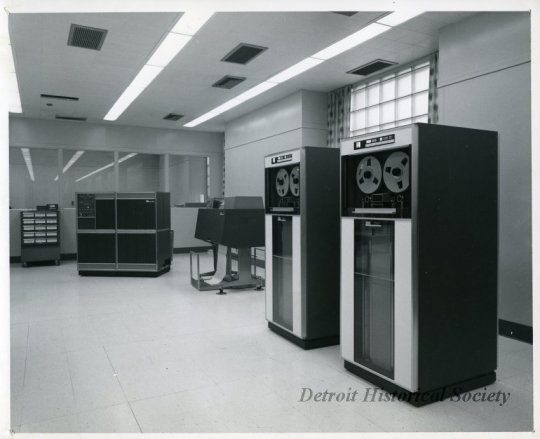
View On WordPress
7 notes
·
View notes
Photo

Nocturnal view of the Donaldson & Meier-designed Campbell Symington House at 2nd Avenue and West Alexandrine, built in 1882. Symington was a merchant, forming a successful home furnishings business, Hudson & Symington, with J.L. Hudson, proprietor of the beloved department store. #Detroit #CassCorridor #WillisSeldenHistoricDistrict #MidtownDetroit #RomanesqueRevival #VictorianArchitecture #DonaldsonandMeier #archi_ologie #oldhouselove #casasecasarios #houses_ofthe_world #beautifulhouseoldandnew #TheAmericanHome #houseportrait #BrickStory #RawDetroit #PureMichigan #PureMittigan #MotorCityShooters #PureDetroit313 #DepictTheD #VisitDetroit #Michiganders #ThisPlaceMatters #ThisPlaceMattersDetroit #MichiganPlacesMatter (at Campbell Symington House Historic Distrct) https://www.instagram.com/p/CM0vWuvDaRy/?igshid=1s1tt0j16npw4
#detroit#casscorridor#willisseldenhistoricdistrict#midtowndetroit#romanesquerevival#victorianarchitecture#donaldsonandmeier#archi_ologie#oldhouselove#casasecasarios#houses_ofthe_world#beautifulhouseoldandnew#theamericanhome#houseportrait#brickstory#rawdetroit#puremichigan#puremittigan#motorcityshooters#puredetroit313#depictthed#visitdetroit#michiganders#thisplacematters#thisplacemattersdetroit#michiganplacesmatter
5 notes
·
View notes
Photo
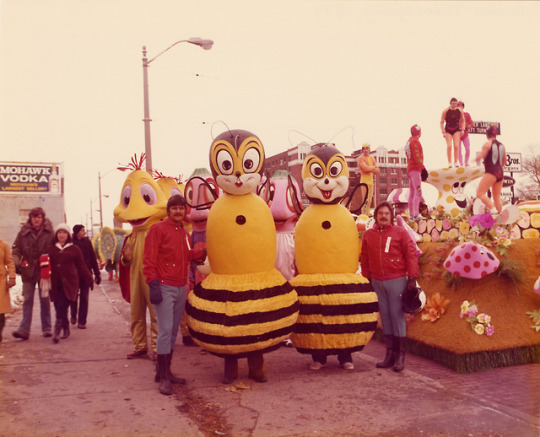
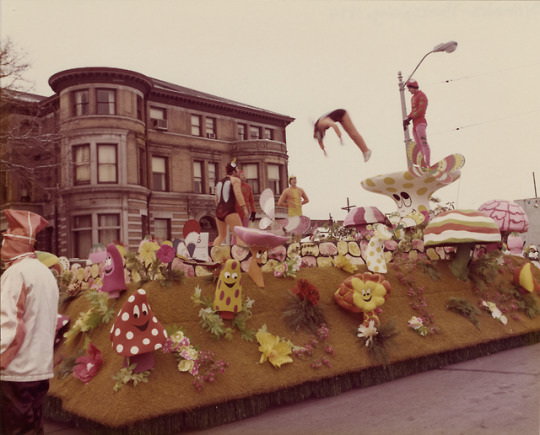
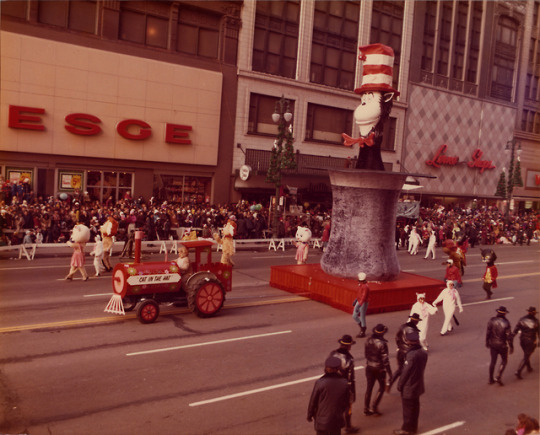
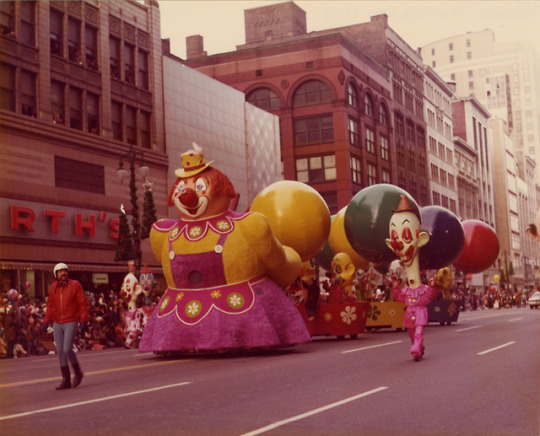
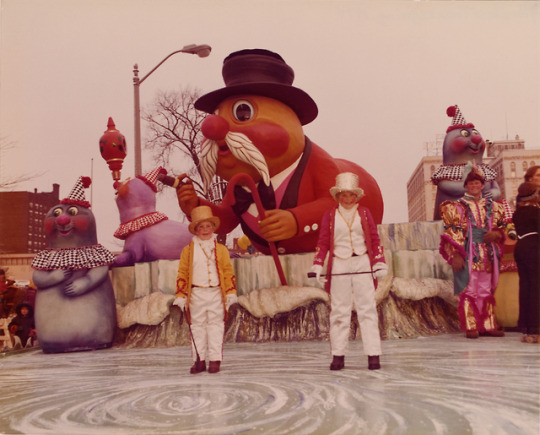
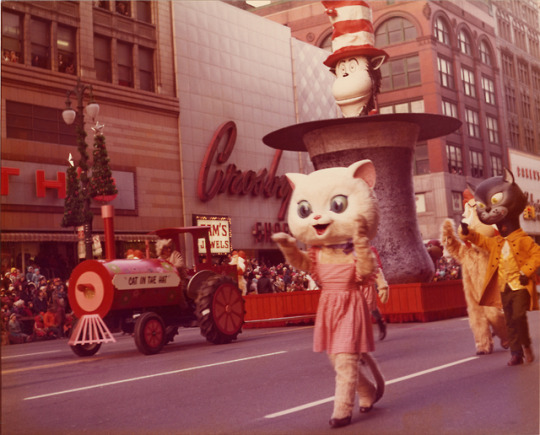
J.L. Hudson Thanksgiving Day parade, Detroit, Michigan, November 28, 1974
#thanksgiving#detroit#michigan#photography#vintage#vintage photography#1970s#parade#wayne county#color photography
81 notes
·
View notes
Text
Fun Facts You Didn’t Know about Target
Established By George Dayton
Target Corporation was established in 1902 by a man named George Dayton, who had been conceived in the territory of New York yet ended up in the province of Minnesota. Accordingly, this is Target Corporation because once called Dayton’s Dry Goods, however it ought to be referenced that wasn’t the primary name of the principal store of what might turn into the cutting edge enterprise.
George Dayton Wanted to Become a Minister
At a certain point in time, Dayton needed to turn into a pastor. Be that as it may, he ended up turning into an agent rather, however he held his religious feelings. For instance, Dayton was a devotee to bettering his locale just as helping other people. Moreover, Dayton was an extremely dynamic individual from his congregation, as appeared by the way that he instructed Sunday School just as facilitated faith gathering in his home all the time. All things considered, it is fascinating to take note of that Dayton was driven onto his way of beginning up a retail establishment in light of his inclusion with his congregation.
George Dayton’s Church Burned Down During the Panic of 1893
During the Panic of 1893, Dayton’s congregation torched without the way to modify it. Thus, it persuaded him to buy an unfilled parcel arranged beside it which had been in its ownership, which Dayton continued to use to assemble a structure with six stories. This is the structure that injury up turning into the home of what might move toward becoming Target Corporation, however it ought to be noticed that the story is to some degree more confounded than Dayton settling on the decision to go into business in his very own structure.
George Dayton Took Over Goodfellow Dry Goods
At first, Dayton persuaded the Reuben Simon Goodfellow Company to put its Goodfellow Dry Goods in his new structure. In any case, it wasn’t well before the proprietor of said organization resigned from the business, with the outcome that Dayon ended up purchasing said person’s offer in it. This is the manner by which Dayton came to turn into the proprietor of a store, which he continued to rename Dayton’s Dry Goods. In time, Dayton’s Dry Goods would experience further name changes, which is the reason it is currently Target Corporation as opposed to either Dayton’s Dry Goods or something like that.
George Dayton Continued to Run His Business During the Depression
Dayton stayed accountable for his business all through the Great Depression. It is fascinating to take note of that his retail establishment stayed in great condition all through this timeframe, which more likely than not been a test considering the low interest that would have pervasive at that point. All things considered, Dayton’s business obtained a gems store just before the beginning of the Great Depression, which he kept on clutching regardless of the way that it delivered an overal deficit all through that timeframe.
George Dayton Was Succeeded By His Family Members
Dayton’s business saw a difference in initiative in 1938 when he kicked the bucket at 80 years old. Therefore, he was prevailing by his child Nelson, who thusly, was prevailing by his child Donald when he kicked the bucket in 1950. It was Donald and his cousins who set out on an alter of course for the business all in all by picking an increasingly mainstream approach while disposing of the Presbyterian rules that had been the inclination of the two his dad and his granddad.
Target Was Founded to Be Different From the Department Store
Target was made to set up a store that would empower the business to seek after a strategy of “upscale markdown retailing.” This was basic in light of the fact that the business needed to ensure that there would be a reasonable line drawn between the new store and its retail establishment as opposed to making one haze into the other. Given the sheer number of Target puts away opened up with a brief timeframe, obviously the business hit upon a triumphant equation, however its encounters were in no way, shape or form consistently smooth and continuous.
Dayton Became Dayton-Hudson
In 1969, the Dayton Company turned into the Dayton-Hudson Company when it converged with the J.L. Hudson Company, which ran a chain of retail establishments that were gathered in the territory of Michigan. Accordingly, the produce of this merger ended up one of the greatest retail organizations in the entire of the United States, including Target as well as various retail chains. The entire thing was made conceivable by the decay of Hudson’s, which was caused to some degree by changing socioeconomics that made it hard for it to keep making a benefit by utilizing its once-reasonable methodologies.
Renamed Target Corporation in 2000
Dayton-Hudson turned into the Target Corporation in 2000. This is on the grounds that Target made up somewhere close to 75 and 80 percent of its income by that point in time, implying that it was its single most significant part by a critical edge. Other than the name change, the administration of Target Corporation rolled out some different improvements at around a similar time too, with models extending from setting up Target Direct by isolating its web based business tasks to its decision to rebrand both Dayton’s and Hudson’s retail establishments under the name of Marshall Field’s.
Target Canada Was a Huge Disaster
All things considered, Target Corporation has experienced a lot of allegorical hindrances. For instance, its push to venture into Canada was a tremendous calamity, especially in light of the fact that it had poured a lot of assets to set up in excess of a 100 retail chains at its stature. The definite reason for the disappointment was multi-faceted, with precedents extending from high costs to inventory network issues. Thus, Target was compelled to haul out of the Canadian market in 2015, with the outcome that it has progressed toward becoming only an exercise for different retailers arranging out their own outside extensions.
Target Corporation Can Be Pretty Philanthropic
It is fascinating to take note of that one of the manners in which that Target Corporation stays consistent with its author is its enthusiasm for generosity. For instance, it gives a level of its benefits to altruistic causes on a yearly premise, with a fantastic model being the means by which a 2005 article in Forbes depicted it giving 2.1 percent of its benefits as such. In like manner, Target Corporation was the one that driven the push for the Target House complex in Memphis, which exists to house the groups of patients at a nearby kids’ emergency clinic.
Target Corporation Has a No-Solicitation Rule
Target stores have a no-sales rule at its areas, which can make it hard for volunteers to gather subsidizing for different cases. Beforehand, Target had an exclusion for the Salvation Army, however said exception was disavowed. Be that as it may, that was not the finish of their organization in light of the fact that the renouncement accompanied an activity to make sense of new ways that the two could cooperate, with the outcome that Target keeps on being a noteworthy supporter of said philanthropy just as others out there.
Target Helps Out During Disasters
Talking about which, it should not shock discover that Target assists during calamities in a wide scope of ways. For instance, it has been known to make its stores accessible for use as war rooms for salvage endeavors. In like manner, it has been known to give cash as well as its items, which can really be more helpful than giving only cash in specific situations on account of the strategic difficulties of really getting things to regions where the neighborhood foundation has been disturbed.
Keen on Environmentalism
Maybe obviously, Target Corporation is particularly intrigued by environmentalism, which is the reason it has propelled various activities in such manner. One phenomenal model is its enthusiasm for structure green structures, which work while utilizing less assets than generally conceivable. Something that can be helpful in a down to business sense by offering cost decreases. Another precedent is Target’s enthusiasm for reusing, which shields a wide scope of materials from being dumped in landfills.
A long way From Being Perfect in This Regard
All things considered, Target Corporation doesn’t actually have an ideal, flawless record with regards to natural issues. For instance, Target stores in the province of California have been blamed for dumping poisonous waste in landfills, which is a tremendous issue in light of the fact that lethal waste has rather awful inclinations of leaking out eventually. Besides, Target stores have been blamed for promoting items as being naturally inviting when they truly weren’t, which has turned out to be sadly regular in a time when environmentalism is well-respected by a ton of buyers with a ton of acquiring power.
Truly Recognizable Symbol
Target is a brilliant case of a business that has had colossal achievement in concocting an important logo. For verification, look no more remote than the examinations proposing that in excess of 95 percent of individuals in the United States are fit for perceiving Target’s bullseye logo, which is very much picked in light of its name.
Contends By Offering Higher-Quality Products At Better Prices
Target’s procedure is to offer items at reasonable costs. In any case, there is something else entirely to it than that, seeing as how it spends significant time in offering higher-quality items at reasonable costs. The person who thought of it depicted it as making items reasonable by cutting costs as opposed to making an immense promoting complain about offering less expensive items at low costs. Also, Target is keen on offering items that envision the most recent patterns, which adds to its exhibition too.
1 note
·
View note
Photo
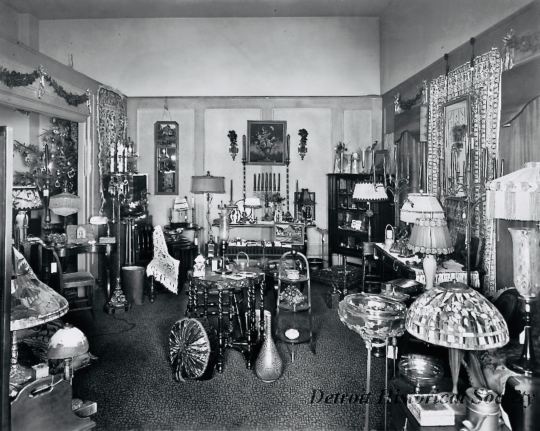
1923 Detroit, Michigan interior of the J.L. Hudson Department Store. From Department Stores Remembered, FB.
63 notes
·
View notes
Text
Fun Facts You Didn’t Know about Target
Established By George Dayton
Target Corporation was established in 1902 by a man named George Dayton, who had been conceived in the territory of New York yet ended up in the province of Minnesota. Accordingly, this is Target Corporation because once called Dayton’s Dry Goods, however it ought to be referenced that wasn’t the primary name of the principal store of what might turn into the cutting edge enterprise.
George Dayton Wanted to Become a Minister
At a certain point in time, Dayton needed to turn into a pastor. Be that as it may, he ended up turning into an agent rather, however he held his religious feelings. For instance, Dayton was a devotee to bettering his locale just as helping other people. Moreover, Dayton was an extremely dynamic individual from his congregation, as appeared by the way that he instructed Sunday School just as facilitated faith gathering in his home all the time. All things considered, it is fascinating to take note of that Dayton was driven onto his way of beginning up a retail establishment in light of his inclusion with his congregation.
George Dayton’s Church Burned Down During the Panic of 1893
During the Panic of 1893, Dayton’s congregation torched without the way to modify it. Thus, it persuaded him to buy an unfilled parcel arranged beside it which had been in its ownership, which Dayton continued to use to assemble a structure with six stories. This is the structure that injury up turning into the home of what might move toward becoming Target Corporation, however it ought to be noticed that the story is to some degree more confounded than Dayton settling on the decision to go into business in his very own structure.
George Dayton Took Over Goodfellow Dry Goods
At first, Dayton persuaded the Reuben Simon Goodfellow Company to put its Goodfellow Dry Goods in his new structure. In any case, it wasn’t well before the proprietor of said organization resigned from the business, with the outcome that Dayon ended up purchasing said person’s offer in it. This is the manner by which Dayton came to turn into the proprietor of a store, which he continued to rename Dayton’s Dry Goods. In time, Dayton’s Dry Goods would experience further name changes, which is the reason it is currently Target Corporation as opposed to either Dayton’s Dry Goods or something like that.
George Dayton Continued to Run His Business During the Depression
Dayton stayed accountable for his business all through the Great Depression. It is fascinating to take note of that his retail establishment stayed in great condition all through this timeframe, which more likely than not been a test considering the low interest that would have pervasive at that point. All things considered, Dayton’s business obtained a gems store just before the beginning of the Great Depression, which he kept on clutching regardless of the way that it delivered an overal deficit all through that timeframe.
George Dayton Was Succeeded By His Family Members
Dayton’s business saw a difference in initiative in 1938 when he kicked the bucket at 80 years old. Therefore, he was prevailing by his child Nelson, who thusly, was prevailing by his child Donald when he kicked the bucket in 1950. It was Donald and his cousins who set out on an alter of course for the business all in all by picking an increasingly mainstream approach while disposing of the Presbyterian rules that had been the inclination of the two his dad and his granddad.
Target Was Founded to Be Different From the Department Store
Target was made to set up a store that would empower the business to seek after a strategy of “upscale markdown retailing.” This was basic in light of the fact that the business needed to ensure that there would be a reasonable line drawn between the new store and its retail establishment as opposed to making one haze into the other. Given the sheer number of Target puts away opened up with a brief timeframe, obviously the business hit upon a triumphant equation, however its encounters were in no way, shape or form consistently smooth and continuous.
Dayton Became Dayton-Hudson
In 1969, the Dayton Company turned into the Dayton-Hudson Company when it converged with the J.L. Hudson Company, which ran a chain of retail establishments that were gathered in the territory of Michigan. Accordingly, the produce of this merger ended up one of the greatest retail organizations in the entire of the United States, including Target as well as various retail chains. The entire thing was made conceivable by the decay of Hudson’s, which was caused to some degree by changing socioeconomics that made it hard for it to keep making a benefit by utilizing its once-reasonable methodologies.
Renamed Target Corporation in 2000
Dayton-Hudson turned into the Target Corporation in 2000. This is on the grounds that Target made up somewhere close to 75 and 80 percent of its income by that point in time, implying that it was its single most significant part by a critical edge. Other than the name change, the administration of Target Corporation rolled out some different improvements at around a similar time too, with models extending from setting up Target Direct by isolating its web based business tasks to its decision to rebrand both Dayton’s and Hudson’s retail establishments under the name of Marshall Field’s.
Target Canada Was a Huge Disaster
All things considered, Target Corporation has experienced a lot of allegorical hindrances. For instance, its push to venture into Canada was a tremendous calamity, especially in light of the fact that it had poured a lot of assets to set up in excess of a 100 retail chains at its stature. The definite reason for the disappointment was multi-faceted, with precedents extending from high costs to inventory network issues. Thus, Target was compelled to haul out of the Canadian market in 2015, with the outcome that it has progressed toward becoming only an exercise for different retailers arranging out their own outside extensions.
Target Corporation Can Be Pretty Philanthropic
It is fascinating to take note of that one of the manners in which that Target Corporation stays consistent with its author is its enthusiasm for generosity. For instance, it gives a level of its benefits to altruistic causes on a yearly premise, with a fantastic model being the means by which a 2005 article in Forbes depicted it giving 2.1 percent of its benefits as such. In like manner, Target Corporation was the one that driven the push for the Target House complex in Memphis, which exists to house the groups of patients at a nearby kids’ emergency clinic.
Target Corporation Has a No-Solicitation Rule
Target stores have a no-sales rule at its areas, which can make it hard for volunteers to gather subsidizing for different cases. Beforehand, Target had an exclusion for the Salvation Army, however said exception was disavowed. Be that as it may, that was not the finish of their organization in light of the fact that the renouncement accompanied an activity to make sense of new ways that the two could cooperate, with the outcome that Target keeps on being a noteworthy supporter of said philanthropy just as others out there.
Target Helps Out During Disasters
Talking about which, it should not shock discover that Target assists during calamities in a wide scope of ways. For instance, it has been known to make its stores accessible for use as war rooms for salvage endeavors. In like manner, it has been known to give cash as well as its items, which can really be more helpful than giving only cash in specific situations on account of the strategic difficulties of really getting things to regions where the neighborhood foundation has been disturbed.
Keen on Environmentalism
Maybe obviously, Target Corporation is particularly intrigued by environmentalism, which is the reason it has propelled various activities in such manner. One phenomenal model is its enthusiasm for structure green structures, which work while utilizing less assets than generally conceivable. Something that can be helpful in a down to business sense by offering cost decreases. Another precedent is Target’s enthusiasm for reusing, which shields a wide scope of materials from being dumped in landfills.
A long way From Being Perfect in This Regard
All things considered, Target Corporation doesn’t actually have an ideal, flawless record with regards to natural issues. For instance, Target stores in the province of California have been blamed for dumping poisonous waste in landfills, which is a tremendous issue in light of the fact that lethal waste has rather awful inclinations of leaking out eventually. Besides, Target stores have been blamed for promoting items as being naturally inviting when they truly weren’t, which has turned out to be sadly regular in a time when environmentalism is well-respected by a ton of buyers with a ton of acquiring power.
Truly Recognizable Symbol
Target is a brilliant case of a business that has had colossal achievement in concocting an important logo. For verification, look no more remote than the examinations proposing that in excess of 95 percent of individuals in the United States are fit for perceiving Target’s bullseye logo, which is very much picked in light of its name.
Contends By Offering Higher-Quality Products At Better Prices
Target’s procedure is to offer items at reasonable costs. In any case, there is something else entirely to it than that, seeing as how it spends significant time in offering higher-quality items at reasonable costs. The person who thought of it depicted it as making items reasonable by cutting costs as opposed to making an immense promoting complain about offering less expensive items at low costs. Also, Target is keen on offering items that envision the most recent patterns, which adds to its exhibition too.
1 note
·
View note
Text
Fun Facts You Didn’t Know about Target
Established By George Dayton
Target Corporation was established in 1902 by a man named George Dayton, who had been conceived in the territory of New York yet ended up in the province of Minnesota. Accordingly, this is Target Corporation because once called Dayton’s Dry Goods, however it ought to be referenced that wasn’t the primary name of the principal store of what might turn into the cutting edge enterprise.
George Dayton Wanted to Become a Minister
At a certain point in time, Dayton needed to turn into a pastor. Be that as it may, he ended up turning into an agent rather, however he held his religious feelings. For instance, Dayton was a devotee to bettering his locale just as helping other people. Moreover, Dayton was an extremely dynamic individual from his congregation, as appeared by the way that he instructed Sunday School just as facilitated faith gathering in his home all the time. All things considered, it is fascinating to take note of that Dayton was driven onto his way of beginning up a retail establishment in light of his inclusion with his congregation.
George Dayton’s Church Burned Down During the Panic of 1893
During the Panic of 1893, Dayton’s congregation torched without the way to modify it. Thus, it persuaded him to buy an unfilled parcel arranged beside it which had been in its ownership, which Dayton continued to use to assemble a structure with six stories. This is the structure that injury up turning into the home of what might move toward becoming Target Corporation, however it ought to be noticed that the story is to some degree more confounded than Dayton settling on the decision to go into business in his very own structure.
George Dayton Took Over Goodfellow Dry Goods
At first, Dayton persuaded the Reuben Simon Goodfellow Company to put its Goodfellow Dry Goods in his new structure. In any case, it wasn’t well before the proprietor of said organization resigned from the business, with the outcome that Dayon ended up purchasing said person’s offer in it. This is the manner by which Dayton came to turn into the proprietor of a store, which he continued to rename Dayton’s Dry Goods. In time, Dayton’s Dry Goods would experience further name changes, which is the reason it is currently Target Corporation as opposed to either Dayton’s Dry Goods or something like that.
George Dayton Continued to Run His Business During the Depression
Dayton stayed accountable for his business all through the Great Depression. It is fascinating to take note of that his retail establishment stayed in great condition all through this timeframe, which more likely than not been a test considering the low interest that would have pervasive at that point. All things considered, Dayton’s business obtained a gems store just before the beginning of the Great Depression, which he kept on clutching regardless of the way that it delivered an overal deficit all through that timeframe.
George Dayton Was Succeeded By His Family Members
Dayton’s business saw a difference in initiative in 1938 when he kicked the bucket at 80 years old. Therefore, he was prevailing by his child Nelson, who thusly, was prevailing by his child Donald when he kicked the bucket in 1950. It was Donald and his cousins who set out on an alter of course for the business all in all by picking an increasingly mainstream approach while disposing of the Presbyterian rules that had been the inclination of the two his dad and his granddad.
Target Was Founded to Be Different From the Department Store
Target was made to set up a store that would empower the business to seek after a strategy of “upscale markdown retailing.” This was basic in light of the fact that the business needed to ensure that there would be a reasonable line drawn between the new store and its retail establishment as opposed to making one haze into the other. Given the sheer number of Target puts away opened up with a brief timeframe, obviously the business hit upon a triumphant equation, however its encounters were in no way, shape or form consistently smooth and continuous.
Dayton Became Dayton-Hudson
In 1969, the Dayton Company turned into the Dayton-Hudson Company when it converged with the J.L. Hudson Company, which ran a chain of retail establishments that were gathered in the territory of Michigan. Accordingly, the produce of this merger ended up one of the greatest retail organizations in the entire of the United States, including Target as well as various retail chains. The entire thing was made conceivable by the decay of Hudson’s, which was caused to some degree by changing socioeconomics that made it hard for it to keep making a benefit by utilizing its once-reasonable methodologies.
Renamed Target Corporation in 2000
Dayton-Hudson turned into the Target Corporation in 2000. This is on the grounds that Target made up somewhere close to 75 and 80 percent of its income by that point in time, implying that it was its single most significant part by a critical edge. Other than the name change, the administration of Target Corporation rolled out some different improvements at around a similar time too, with models extending from setting up Target Direct by isolating its web based business tasks to its decision to rebrand both Dayton’s and Hudson’s retail establishments under the name of Marshall Field’s.
Target Canada Was a Huge Disaster
All things considered, Target Corporation has experienced a lot of allegorical hindrances. For instance, its push to venture into Canada was a tremendous calamity, especially in light of the fact that it had poured a lot of assets to set up in excess of a 100 retail chains at its stature. The definite reason for the disappointment was multi-faceted, with precedents extending from high costs to inventory network issues. Thus, Target was compelled to haul out of the Canadian market in 2015, with the outcome that it has progressed toward becoming only an exercise for different retailers arranging out their own outside extensions.
Target Corporation Can Be Pretty Philanthropic
It is fascinating to take note of that one of the manners in which that Target Corporation stays consistent with its author is its enthusiasm for generosity. For instance, it gives a level of its benefits to altruistic causes on a yearly premise, with a fantastic model being the means by which a 2005 article in Forbes depicted it giving 2.1 percent of its benefits as such. In like manner, Target Corporation was the one that driven the push for the Target House complex in Memphis, which exists to house the groups of patients at a nearby kids’ emergency clinic.
Target Corporation Has a No-Solicitation Rule
Target stores have a no-sales rule at its areas, which can make it hard for volunteers to gather subsidizing for different cases. Beforehand, Target had an exclusion for the Salvation Army, however said exception was disavowed. Be that as it may, that was not the finish of their organization in light of the fact that the renouncement accompanied an activity to make sense of new ways that the two could cooperate, with the outcome that Target keeps on being a noteworthy supporter of said philanthropy just as others out there.
Target Helps Out During Disasters
Talking about which, it should not shock discover that Target assists during calamities in a wide scope of ways. For instance, it has been known to make its stores accessible for use as war rooms for salvage endeavors. In like manner, it has been known to give cash as well as its items, which can really be more helpful than giving only cash in specific situations on account of the strategic difficulties of really getting things to regions where the neighborhood foundation has been disturbed.
Keen on Environmentalism
Maybe obviously, Target Corporation is particularly intrigued by environmentalism, which is the reason it has propelled various activities in such manner. One phenomenal model is its enthusiasm for structure green structures, which work while utilizing less assets than generally conceivable. Something that can be helpful in a down to business sense by offering cost decreases. Another precedent is Target’s enthusiasm for reusing, which shields a wide scope of materials from being dumped in landfills.
A long way From Being Perfect in This Regard
All things considered, Target Corporation doesn’t actually have an ideal, flawless record with regards to natural issues. For instance, Target stores in the province of California have been blamed for dumping poisonous waste in landfills, which is a tremendous issue in light of the fact that lethal waste has rather awful inclinations of leaking out eventually. Besides, Target stores have been blamed for promoting items as being naturally inviting when they truly weren’t, which has turned out to be sadly regular in a time when environmentalism is well-respected by a ton of buyers with a ton of acquiring power.
Truly Recognizable Symbol
Target is a brilliant case of a business that has had colossal achievement in concocting an important logo. For verification, look no more remote than the examinations proposing that in excess of 95 percent of individuals in the United States are fit for perceiving Target’s bullseye logo, which is very much picked in light of its name.
Contends By Offering Higher-Quality Products At Better Prices
Target’s procedure is to offer items at reasonable costs. In any case, there is something else entirely to it than that, seeing as how it spends significant time in offering higher-quality items at reasonable costs. The person who thought of it depicted it as making items reasonable by cutting costs as opposed to making an immense promoting complain about offering less expensive items at low costs. Also, Target is keen on offering items that envision the most recent patterns, which adds to its exhibition too.
1 note
·
View note
Text
Double Rainbow at Belle Isle's Scott Fountain
Double Rainbow at Belle Isle's Scott Fountain in Detroit by Scott Laidlaw
Double Rainbow by Scott Laidlaw The James Scott Memorial Fountain on Detroit’s Belle Isle is a masterpiece in marble. It was completed in 1925 & designed by Cass Gilbert who also designed the US Supreme Court. I definitely encourage you to read the Michpics post on the construction & controversy surrounding the fountain & honoree about whom J.L. Hudson opined: “Mr. Scott never did anything for…

View On WordPress
1 note
·
View note
Text
Double Rainbow at Belle Isle's Scott Fountain
Double Rainbow at Belle Isle's Scott Fountain in Detroit by Scott Laidlaw
Double Rainbow by Scott Laidlaw The James Scott Memorial Fountain on Detroit’s Belle Isle is a masterpiece in marble. It was completed in 1925 & designed by Cass Gilbert who also designed the US Supreme Court. I definitely encourage you to read the Michpics post on the construction & controversy surrounding the fountain & honoree about whom J.L. Hudson opined: “Mr. Scott never did anything for…

View On WordPress
0 notes
Photo


Trade cards generally featured eye-catching art that would draw attention to the often-unrelated business advertisements on their reverse. This c. 1912 J.L. Hudson Company card goes to particularly unusual unusual lengths by featuring a fairly typical winter scene... framed within a tambourine... that’s being held by a dog.
The copy on the rear of the card notes the downtown Hudson’s store’s nine floors, and that the building provides “the finest view of the city” conveniently made available thanks to the building’s elevator.
In the years after this trade card’s printing, the company’s flagship store in downtown Detroit would undergo a series of renovations and additions, ultimately standing 25 floors high, and containing a network of 76 passenger and service elevators. The building was demolished in 1998.
Click here to see more of our collection of Detroit trade cards.
9 notes
·
View notes
Text
Câu chuyện lắp đặt máy lạnh công nghiệp
Năm 1914, thiết bị điều hòa không khí đầu tiên được lắp đặt trong một ngôi nhà riêng. Tuy nhiên, kích thước của nó, tương tự như của một chiếc máy tính đời đầu, có nghĩa là nó chiếm quá nhiều không gian để được sử dụng rộng rãi và các mẫu sau này, chẳng hạn như Weathermaker, được Carrier ra mắt vào những năm 1920, có giá quá cao đối với hầu hết mọi người. Việc làm mát để tạo sự thoải mái cho con người, thay vì nhu cầu công nghiệp, đã thực sự thành công khi ba máy điều hòa không khí được lắp đặt tại Cửa hàng bách hóa J.L. Hudson ở Detroit, Michigan. Mọi người chen chúc nhau vào cửa hàng để trải nghiệm phát minh mới. Thời trang lan rộng từ các cửa hàng bách hóa đến rạp chiếu phim, những người có thu nhập tăng chóng mặt nhờ sự thoải mái mà họ cung cấp. Đầu tiên, những ông chủ có ý thức về tiền bạc coi điều hòa không khí là một thứ xa xỉ. Họ cho rằng nếu họ trả tiền cho mọi người để làm việc, thì họ cũng không nên trả tiền để họ được thoải mái. Vì vậy, vào những năm 1940 và 50, ngành công nghiệp bắt đầu đưa ra một thông điệp khác về sản phẩm của mình: theo nghiên cứu của họ, việc lắp đặt máy điều hòa không khí giúp tăng năng suất giữa các nhân viên. Họ phát hiện ra rằng nhân viên đánh máy đã tăng sản lượng của họ lên 24% khi chuyển từ văn phòng thông thường sang văn phòng làm mát. Một nghiên cứu khác về điều kiện làm việc tại văn phòng, được thực hiện vào cuối những năm 50, cho thấy rằng phần lớn các công ty coi điều hòa không khí là yếu tố quan trọng nhất góp phần tạo nên hiệu quả trong văn phòng. Tuy nhiên, điều hòa không khí có những chỉ trích của nó. Jed Brown, một nhà môi trường, phàn nàn rằng điều hòa không khí là một yếu tố gây ra sự nóng lên toàn cầu. Thật không may, ông nói thêm, bởi vì điều hòa không khí dẫn đến nhiệt độ cao hơn, mọi người phải sử dụng nó nhiều hơn. Tuy nhiên, ông thừa nhận rằng nó cung cấp một môi trường trong lành hơn cho nhiều người trong cái nóng của mùa hè.
máy lạnh công nghiệp đứng
0 notes